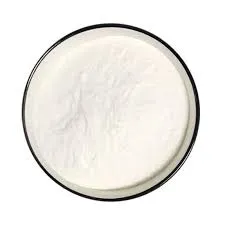
ನವೆಂ . 23, 2024 21:24 Back to list
hpmc for detergent
HPMC for Detergents A Comprehensive Overview
Hydroxypropyl Methylcellulose (HPMC) is a versatile and widely used cellulose derivative that has found its way into various applications, including the formulation of detergents. With its unique properties, HPMC plays an essential role in enhancing the performance of cleaning products. This article delves into the significance of HPMC in detergent formulations, discussing its functionalities, benefits, and the future potential in this domain.
What is HPMC?
HPMC is a non-ionic polymer made from the natural polymer cellulose. The modification involves replacing hydroxyl groups with hydroxypropyl and methyl groups, resulting in a compound that is soluble in water and has extensive applications across industries. In the context of detergents, HPMC serves as a thickener, emulsifier, film-former, and stabilizer, contributing to the overall efficacy of the cleaning product.
Functions of HPMC in Detergents
1. Thickening Agent One of the primary functions of HPMC in detergent formulations is its ability to thicken solutions. This property enhances the texture of liquid detergents, making them more user-friendly. A thicker consistency not only improves the visual appeal but also aids in controlled dispensing, minimizing waste.
2. Stabilization HPMC acts as a stabilizer in various detergent formulations, especially in suspensions and emulsions. Its ability to maintain the stability of the formulation ensures that the active ingredients remain evenly dispersed, preventing sedimentation and separation over time.
3. Film-Former In cleaning applications, HPMC can form a thin film on surfaces. This property is particularly beneficial for providing a protective layer that helps to resist dirt accumulation, making subsequent cleaning easier and more efficient.
4. Moisture Retention HPMC has excellent moisture-retaining capabilities, which can enhance the performance of detergents in humid environments. By retaining moisture, it can help maintain the integrity of the formulation and improve the overall cleaning efficiency.
5. Compatibility HPMC is compatible with a wide range of surfactants and other ingredients commonly found in detergent formulations. This versatility allows manufacturers to create high-performing products without the risk of adverse reactions between ingredients.
hpmc for detergent

Benefits of Using HPMC in Detergents
1. Improved Performance The inclusion of HPMC in detergent formulations often leads to improved cleaning performance. Enhanced viscosity and product stability ensure that surfactants and other active ingredients can work more effectively.
2. Eco-Friendly Alternative As consumers become increasingly conscious of environmental impact, the demand for eco-friendly detergent formulations rises. HPMC, being a plant-based product, serves as a sustainable alternative to synthetic thickeners and stabilizers often used in cleaning products.
3. Consumer Preference The sensory feel of detergents, including their viscosity and application experience, can greatly influence consumer preference. HPMC contributes to a pleasant sensory experience, which can enhance customer satisfaction and brand loyalty.
4. Customization With a variety of grades available, manufacturers can tailor the properties of HPMC according to specific needs—whether it's achieving a particular viscosity or enhancing the formulation's stability. This customization allows for diverse product offerings in the market.
Future Potential of HPMC in Detergents
As the cleaning products industry continues to evolve, the role of HPMC is likely to expand further. With increasing consumer demand for sustainability and eco-friendly products, HPMC’s natural origin aligns with these trends, positioning it as a key player in future detergent formulations. Additionally, ongoing research into the optimization of HPMC's properties could lead to even more innovative applications, enhancing its functionality in various types of detergents, from heavy-duty cleaners to delicate fabric care products.
Conclusion
In summary, Hydroxypropyl Methylcellulose is an invaluable ingredient in the formulation of detergents. Its multifaceted roles, ranging from thickening and stabilization to film formation and moisture retention, significantly enhance the efficacy and appeal of cleaning products. As the industry moves toward more sustainable practices, HPMC stands out as a viable solution, combining performance with eco-friendliness. The future looks bright for HPMC in the detergent market, as both manufacturers and consumers continue to seek out innovative and effective cleaning solutions.
-
Unlocking the Benefits of HPMC Products: A Gateway to Versatile Applications
NewsAug.07,2025
-
Unleashing the Potential of HPMC Ashland: A Comprehensive Look
NewsAug.07,2025
-
Tile Bonding Cellulose: The Key to Superior Adhesion and Durability
NewsAug.07,2025
-
Hydroxypropyl Methylcellulose Powder: The Versatile Component in Modern Pharmaceuticals
NewsAug.07,2025
-
Hydroxyethyl Cellulose: The Versatile Solution for Various Industries
NewsAug.07,2025
-
Hydroxyethyl Cellulose (HEC): The Versatile Polymer for Various Applications
NewsAug.07,2025







